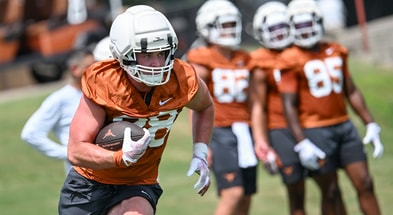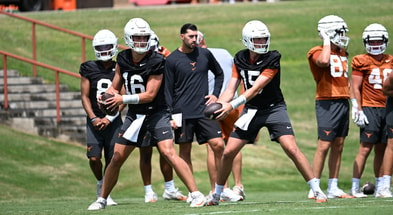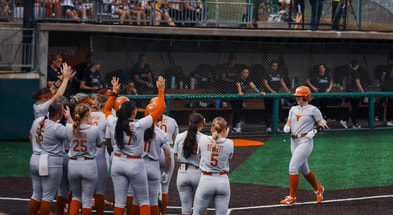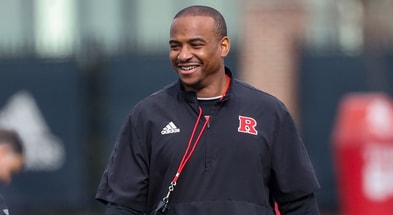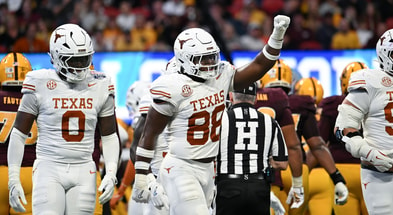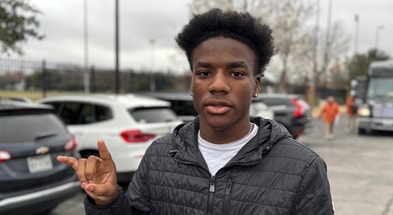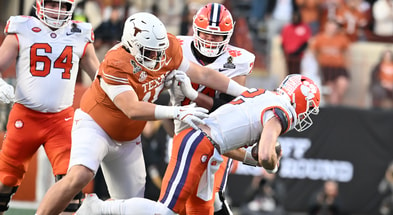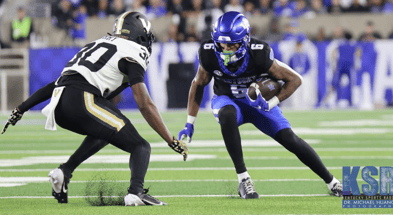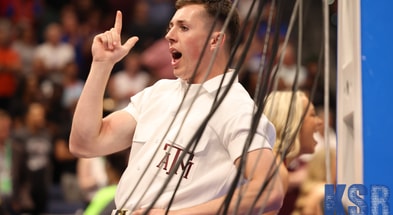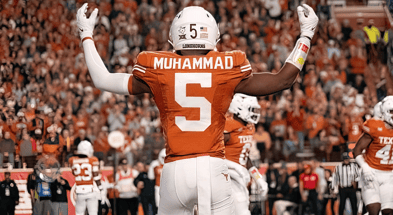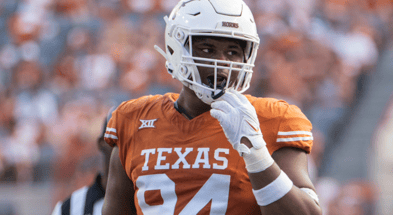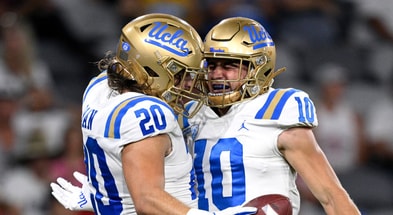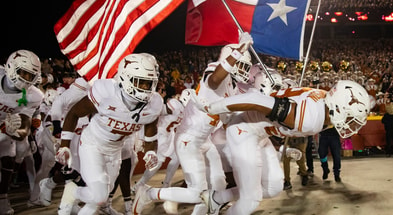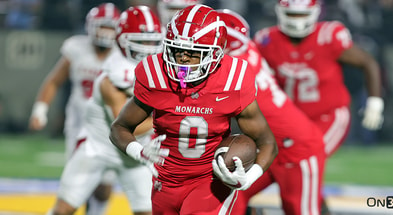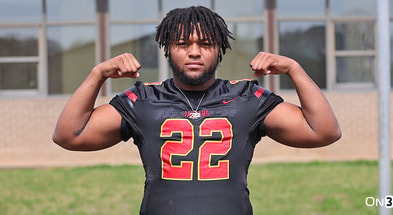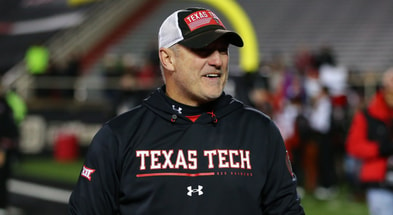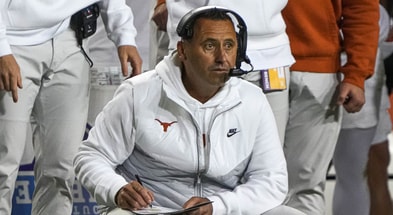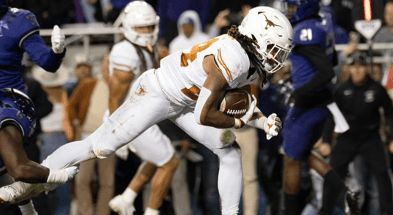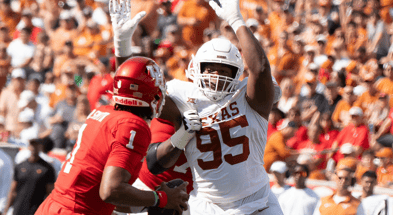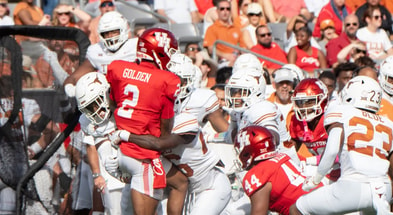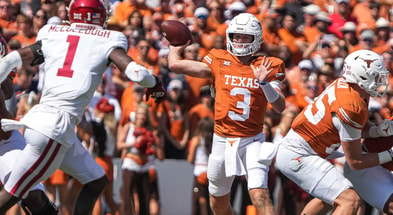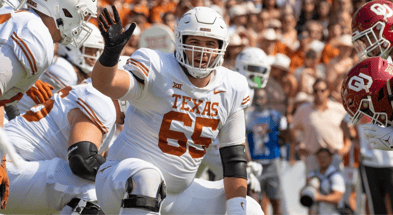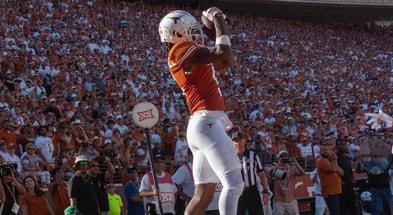Are the Big 12 offenses ready for Charlie Strong
In the 2009 BCS title, Charlie Strong overcame a big challenge in a manner that defined his reputation and helped him from championship DC to becoming the head coach at one of the biggest programs in all of college football.
It was a challenge that was well known to fans of the Texas Longhorns football program, the challenge of stopping Bob Stoops’ Oklahoma Sooners.By combining a veteran roster laden with NFL talent with a multiple, up tempo offense, the 2008 Sooners had built one of the most potent offenses college football had ever seen.Under OC Kevin Wilson, the Sooners were early adopters of the modern hurry-up no-huddle tempo and could snap the ball and run plays less than 15 seconds apart, a strategy defenses had few answers for back in 2008.Complicating the challenge of handling their tempo was amassive and veteran offensive line with four seniors and a junior that would be drafted 4th overall after his own senior season in 2009. Their specialties included stretch blocks on outside zone and the power run and they used both to pound and finish off opponents. As a result the Sooners backfield had two 1,000-yard backs in Chris Brown and DeMarco Murray.The receiving corp was also experienced and featured seniors Manuel Johnson, Quentin Chaney and Juaquin Iglesias. They also mixed in an explosive freshman named Ryan Broyles as a slot receiver in spread sets.The ’08 Oklahoma team was also uniquely dangerous for their ability to attack teams with different formations and personnel groupings, and they frequently employed their TE/FB players on the roster to devastating effect. These included fairly versatile fullback Matt Clapp, punishing blocker Brody Eldridge, and tight end Jermaine Gresham.Gresham was perhaps the most dominant player on the roster for Oklahoma as a 6-foot-5, 260-pound freakish athlete who was comfortable as an in-line blocker or flexed out as a receiver. He was a matchup nightmare for most everyone in college football.Finally at QB, the 2008 Heisman-winner Sam Bradford. Bradfdord threw for 4720 yards in 2008 at 9.8 yards per pass while throwing 55 touchdowns vs only eight interceptions.By flying up and down the field with a team that could find mismatches against just about any opponent, the Sooners turned football games into simple contests of basic execution that they generally won handily.Heading into their matchup with Florida, they’d been held under 40 points only twice and in each instance had scored 35 points (against UT and TCU).The Sooners had scored 58, 62, 66, 65, 61, and 62 points in the six games prior to Florida, while unleashing an unholy fury on the Big 12 and winning over enough voters to elevate them to the BCS title over fellow one-loss Big 12 contenders Texas Tech and Texas.Against this massive, athletic, fast, and veteran group, Charlie Strong led a Florida defense with three upperclassmen starters…and shut them down.Texas Longhorn fans immediately want to know: How did this happen and can it happen again?Strong’s plan for handling the Oklahoma attack was a three-step process in which each step built on the previous one to create a flow of events that allowed the Gators togrip the Sooner passing game and Heisman winner into their jaws and initiate a four quarter-long death roll.Step 1: Match your opponent’s athletes and simplicityMuschamp realized pretty quickly in his first Red River Shootout that his team wasn’t going to be able to trade shots with OU by attempting to make a lot of different calls and using multiple tactics against the Sooner tempo.Strong went into the game with a gameplan that understood and matched the simplicity of the Sooner offense and also made sure to match the Sooner athletes with the proper Floridian counterparts.Oklahoma went into the game without the benefit of having their stud RB, DeMarco Murray, in the stable to take their run game from “dangerous” to “overwhelming.”The remaining Sooner threats that Strong’s gameplan had to account for included their size and quality across the OL, Bradford’s ability to throw accurate balls to any of their solid WRs, and the freak athlete Jermaine Gresham.Overall, Florida leaned heavily on their young secondary, which at this time consisted of sophomore corner Joe Haden, freshman corner Janoris Jenkins, sophomore strong safety Ahmad Black, and sophomore free safety Major Wright.Strong used a variety of different fronts but generally backed it up with Cover-3 schemes using catch-man coverage and FS Wright in the deep middle of the field.They didn’t play a lot of tight, press coverage on the outside receivers but they kept their CBs, NB, and SS within close enough proximity to close on quick throws.Between the four of them they were able to match up with Oklahoma’s receivers playing single-deep safety coverage and thus force the Sooners to beat them with the run game against fair numbers or with Gresham.In order to stop the Sooner run game, the Gators had to be able to handle two lineups in particular: A big set with FB Clapp, TE Eldridge, and TE Gresham all on the field as well as sets with the three wide receivers and Gresham that Bradford had thrived in all year.First the Gators created problems for the Sooners’ spread sets with Strong’s 3-3-5 schemes that utilized 6-foot-1, 200-pound nickelback Will Hill to try and prevent any horrendous mismatches trying to cover Gresham.http://www.tubechop.com/watch/2844153With these 3-3 sets Florida loaded up the perimeter with DEs or LBs to keep the ball funneled inside and well within the range of Mike backer Brandon Spikes and Wright.By using only a few coverage responses, Strong could bring a few different stunts, pressures, and looks to get his DL slicing into the backfield and in control of the Sooner run game.http://www.tubechop.com/watch/2844021While Florida’s young DL couldn’t stop Oklahoma from piling up yards in the run game (RB Chris Brown ran for 110 yards at 5.5 per carry) they avoided any back-breaking plays from the run game thanks to their overall team speed and they managed to get penetration into the backfield at key times that hurt Oklahoma drives and discouraged the Sooners from continuing to pound the ball to Brown when the likely options were either a reasonable gain to stay ahead of the chains or a tackle for loss.Gresham proved to be the hardest challenge for Florida and finished with two TDs among his eight catches but only 62 yards total because Florida’s speed and tackling was enough to limit the damage he did after the catch:http://www.tubechop.com/watch/2843950Application today:Texas fans can probably expect similar tactics designed to manage Big 12 passing games today by relying on good corner play and loading up the edges to force theballcarriers inside where Steve Edmond can reach them.
Step 2: No big plays without paying a tollAlthough Strong relied on playing a lot of single-deep safety and stunting up front to handle OU’s big OL and run game, Florida’s strategy essentially amounted to “bend don’t break.”Bradford completed 26-41 passes for 256 yards, two TDs and two INTs, only 6.2 yards per attempt overall. The Sooners simply couldn’t do enough damage in the passing game to control the game.The trick with spread teams like Oklahoma is that they make choices about their plan of attack based on numbers in the box. Bradford was the Heisman for a reason, and the Oklahoma running game, especially with Murray sitting, existed primarily as a constraint for when teams used 2-deep coverages to try and limit the Sooner passing game.To sit in an obvious single-high safety coverage was something of a slap in the face and Oklahoma responded early by looking to take the top off the Gator defense…http://www.tubechop.com/watch/2844516That wasn’t the only example of this kind of play in the game.http://www.tubechop.com/watch/2844550That’s a cornerback trying to take out Gresham and coming out of that confrontation with a win.The entire game was filled with physical contests where the Gators looked to send a message and the Sooners heard that message loud and clear. It’d be hard to convince me that Oklahoma’s WR doesn’t make this catch if he isn’t concerned with what will happen to him if catches this ball upright:http://www.tubechop.com/watch/2844576Wright dominated the game with nine tackles, a pass breakup, and an interception. Haden added another 10 tackles for the Gators.Sometimes you don’t want to see your secondary rack up a ton of tackles, but if they look like this:http://www.tubechop.com/watch/2844612…then you don’t worry too much about it.The Sooners were unable to complete a pass for more than 25 yards for the entire game and even studs like Broyles and Gresham couldn’t manage any yards after catch against the ferocious Gator secondary.That makes it hard to score a lot of points.Application today:Texas has the corners and the beginnings of the needed physicality and mindset to play this way. The remaining key is finding a head-hunter to man the Free Safety spot and put the fear of God into opposing receivers thinking about exposing their bodies to make a catch, or runners who are looking to turn upfield in the alley.Mykkele Thompson can fill that spot with his range but look out for walk-on Dylan Haines to potentially provide amore physical presence in that spot.
Step 3: Play situational football/reap the benefitsOklahoma had the ball on the goal line in three different possessions in the first half and came away with seven points thanks to DL penetration or aggressive DBs killing runs and deflecting passes.It’d be easy to praise the Gators for their goal line stand when “big game Bob” went for it on 4th and goal:http://www.tubechop.com/watch/2844671The Gators were clever to slip in some fresh DL on the goal line and one of their eager youngsters made a play for them. For the day though, Florida only held Oklahoma to 6-13 on third down.It was difficult to always win obvious 3rd down scenarios when Oklahoma could simply flip the ball out to Gresham or bring out a heavy set and run the ball for 3-5 yards.However, by avoiding missed tackles and forcing Oklahoma into third down after third down, the Gators turned the percentages in their own favor.They played pretty good situational football, but really they just made things easy on themselves by making drives so difficult for Oklahoma.Application today:The Stoops’ Sooners goal is always to put you on the ground and start kicking you so that you decide that regardless of when the beating stops, you aren’t going to get up and challenge them again.They play up-tempo and throw the ball deep early, they set traps with blitzes and attempt to turn you over, and then they run the ball down your throat until you cry uncle. That is, unless you respond to their initial surprise haymaker with a combination that says you aren’t going to go down before you get some shots in yourself.Playing in the Big 12, the Sooners don’t go toe to toe with comparable opponents very often and they don’t always respond particularly well when forced to do so.At Florida, Strong built a defense that won’t back down to anyone and will trade shots with any kid on the block. That same toughness shows up on tape from the Louisville Cardinals defenses and you can probably count on it showing in Austin.If you think the Sooners aren’t necessarily excited to get into a slugfest with a team that hits as hard as they do you’d better believe that the rest of the league isn’t remotely interested in playing four quarters of brute-ball against superior athletes.That’s the hope from Strong’s big legacy game, that he’ll build a team of scrappers that truly put the T back in Texas.
